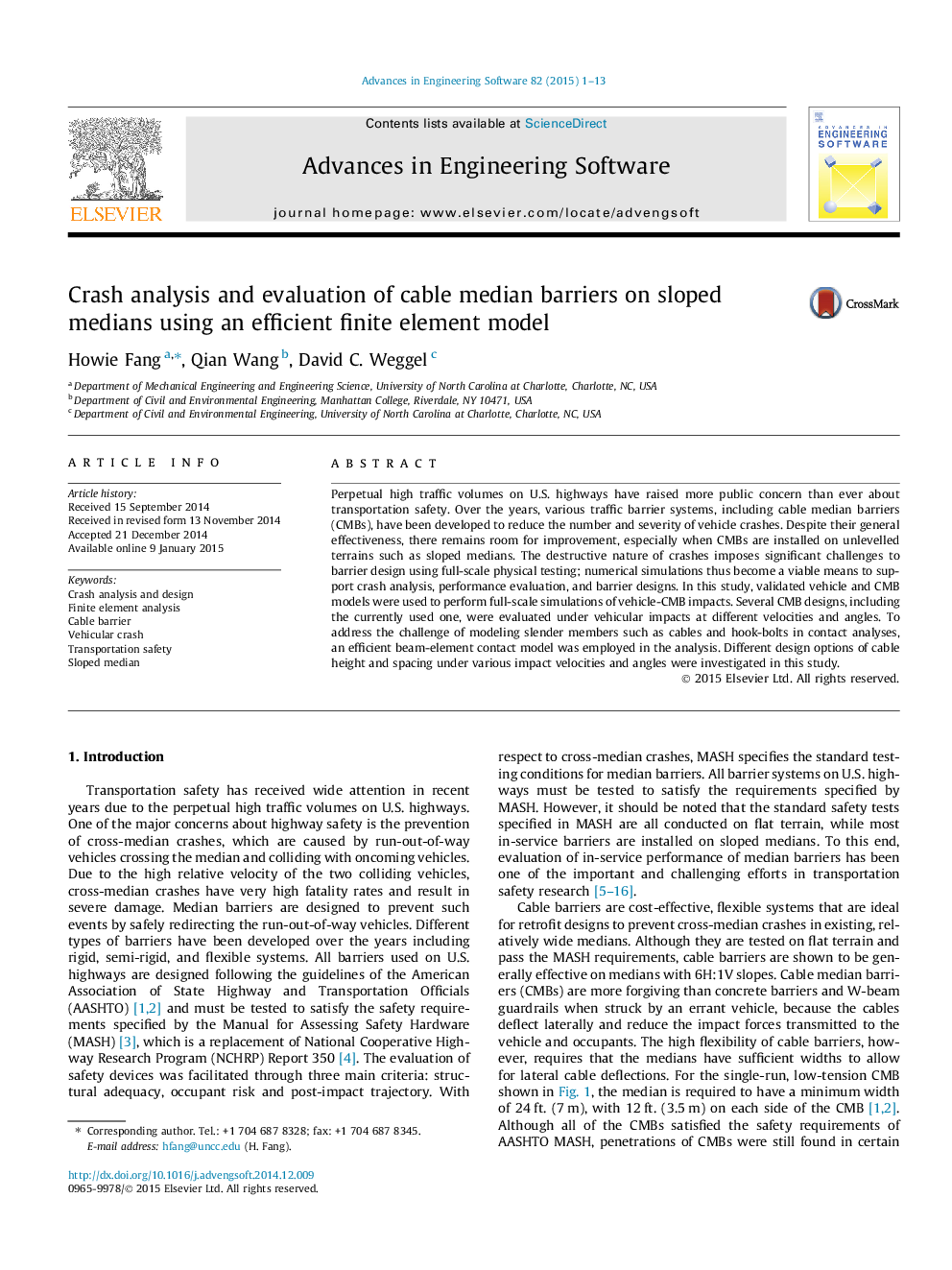| Article ID | Journal | Published Year | Pages | File Type |
|---|---|---|---|---|
| 569586 | Advances in Engineering Software | 2015 | 13 Pages |
•An efficient FE model of a CMB was developed for full-scale crash simulations.•A current CMB design and seven alternative designs were evaluated.•The CMB performance on a sloped median and vehicle-cable engagement were studied.•A new CMB design was developed and shown to have improved performance.
Perpetual high traffic volumes on U.S. highways have raised more public concern than ever about transportation safety. Over the years, various traffic barrier systems, including cable median barriers (CMBs), have been developed to reduce the number and severity of vehicle crashes. Despite their general effectiveness, there remains room for improvement, especially when CMBs are installed on unlevelled terrains such as sloped medians. The destructive nature of crashes imposes significant challenges to barrier design using full-scale physical testing; numerical simulations thus become a viable means to support crash analysis, performance evaluation, and barrier designs. In this study, validated vehicle and CMB models were used to perform full-scale simulations of vehicle-CMB impacts. Several CMB designs, including the currently used one, were evaluated under vehicular impacts at different velocities and angles. To address the challenge of modeling slender members such as cables and hook-bolts in contact analyses, an efficient beam-element contact model was employed in the analysis. Different design options of cable height and spacing under various impact velocities and angles were investigated in this study.
